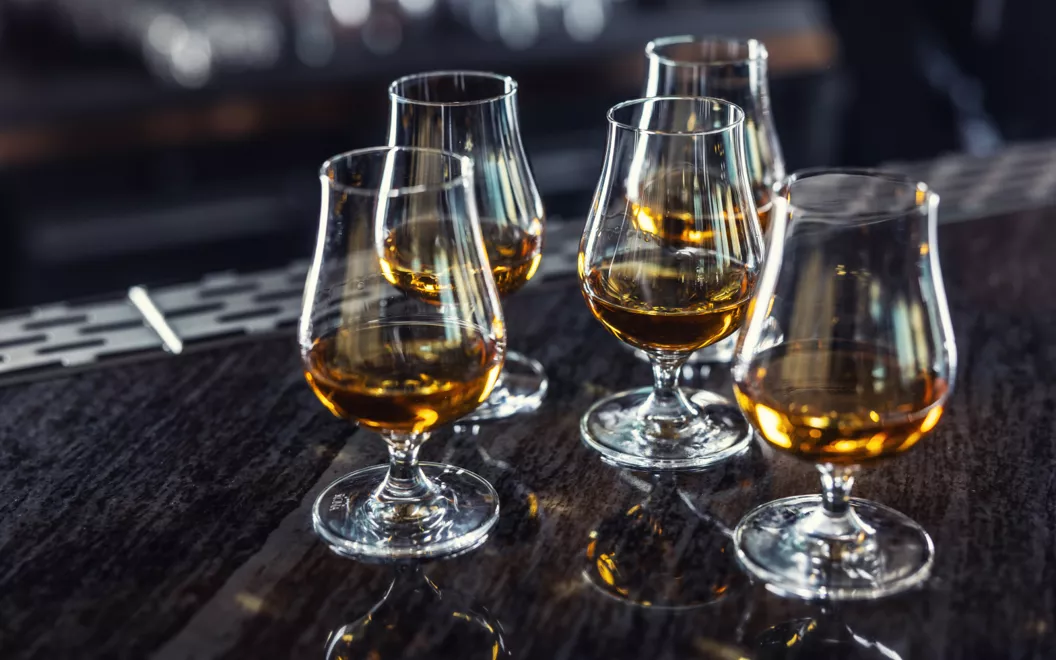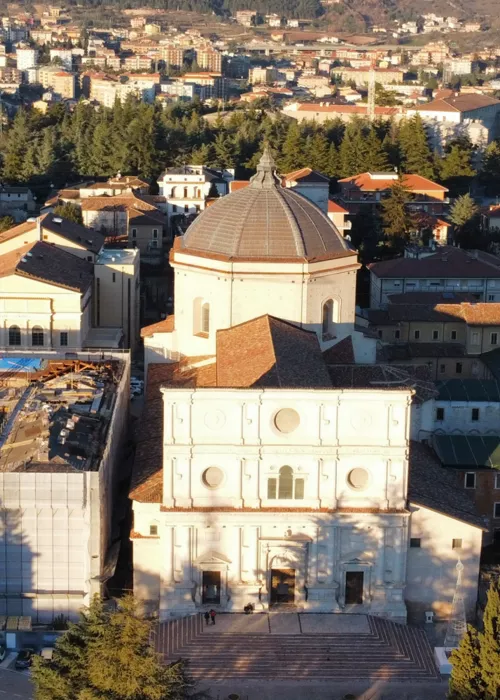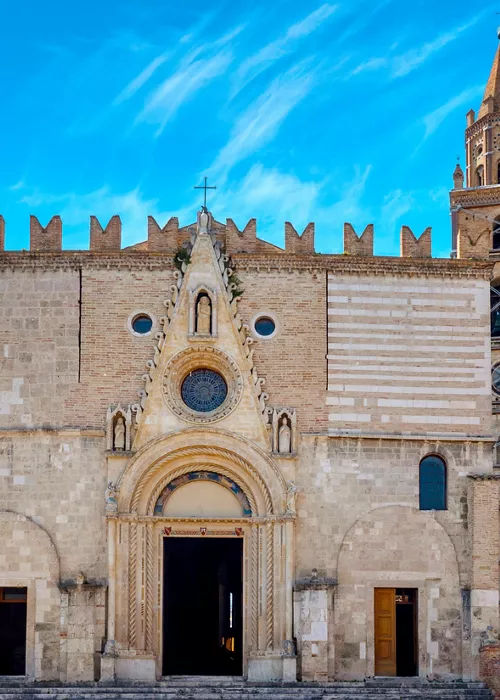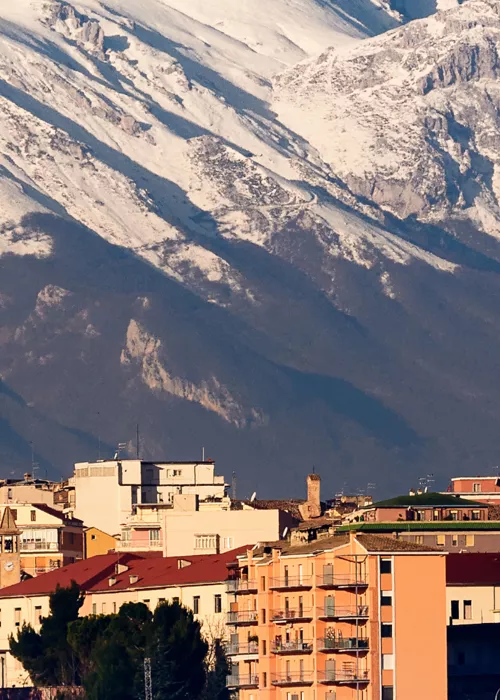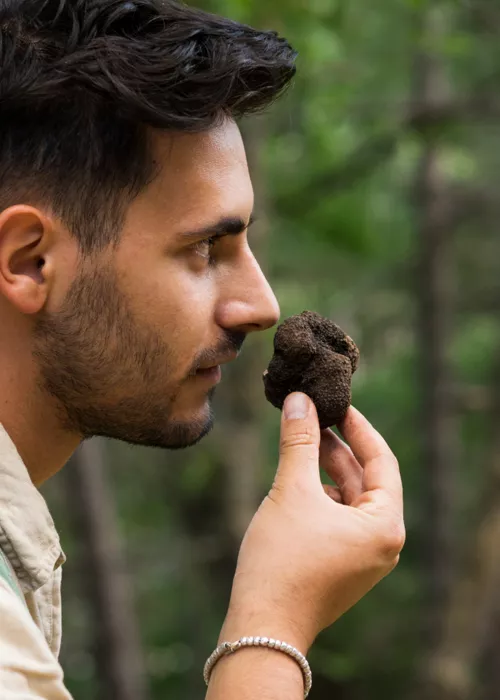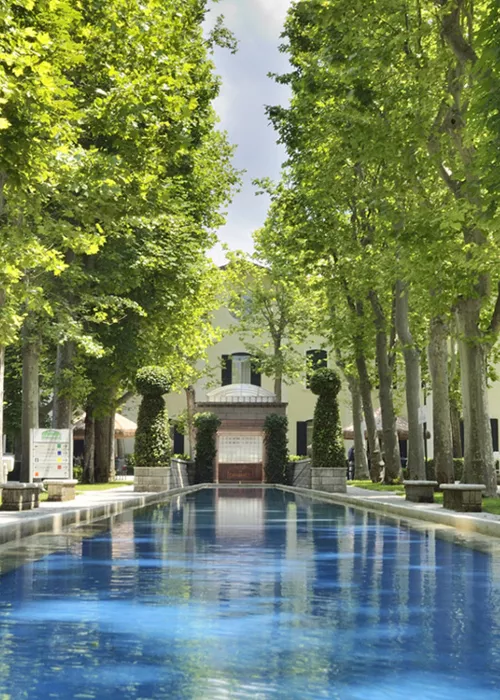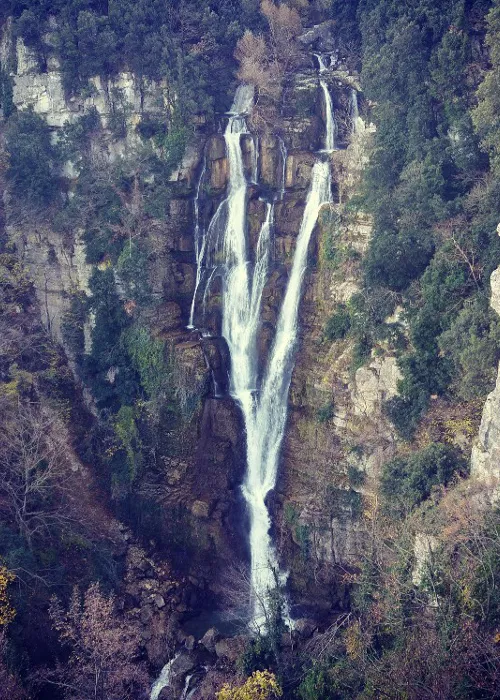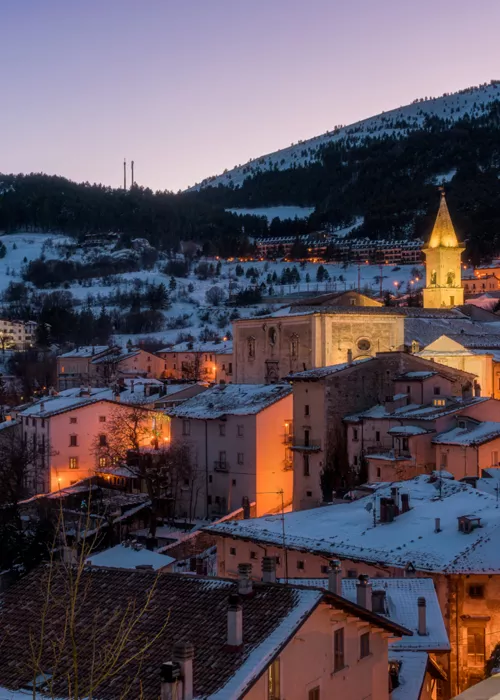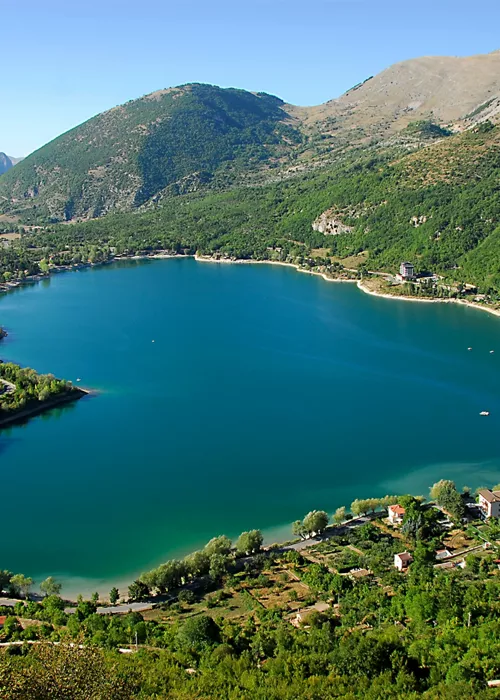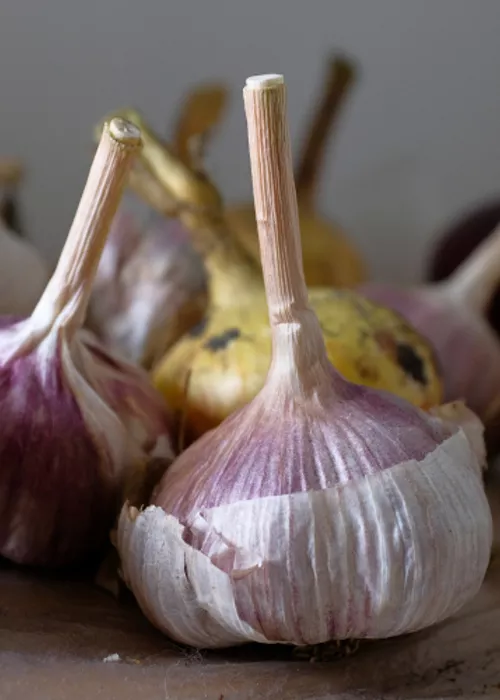Sweet or bitter? The fine cuisine of traditional Abruzzo
5 minutes

The folk wisdom of an ancient people, combined with the millennial knowledge preserved in the many monasteries, has been able to combine taste with an indisputable archaic knowledge of flowers, fruits and aromatic herbs, their properties, their scents and flavours, giving rise to high quality distillates, highly appreciated even outside the region.
Il Centerbe
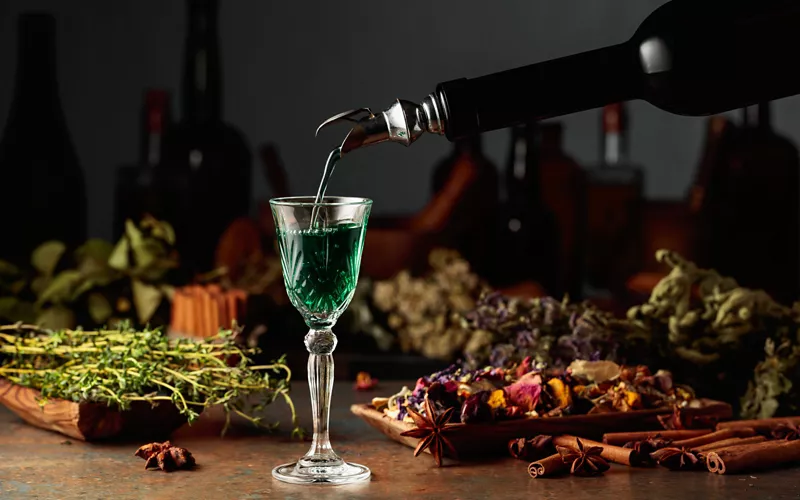
Born within the walls of the ancient abbey of San Clemente in Casauria in the province of Pescara, Centerbe liqueur is now produced throughout the Abruzzo region. An emerald green colour, an intense aroma and a high content are the peculiar characteristics of this ancient preparation: 100 herbs, aromatic and medicinal, collected in the surrounding area and cold infused in alcohol to obtain the tincture that gives rise to the famous liqueur.
Appreciating this ancient elixir to the best means approaching it with respect to the ancient tradition and penetrating every single note. The high alcohol content and the intense aroma of herbs that are difficult to distinguish, requires, through a sort of ritual, a gradual approach that can introduce us, also through smell, to the knowledge of this product.
An excellent corrective to coffee, chocolate and milk, and also used in cooking and confectionery, it owes its popularity to the apothecary Beniamino Toro who, at the end of the 18th century, began producing and marketing in his pharmacy a liqueur known to the monks of Abruzzo since ancient times and only produced at home.
Saffron liqueur
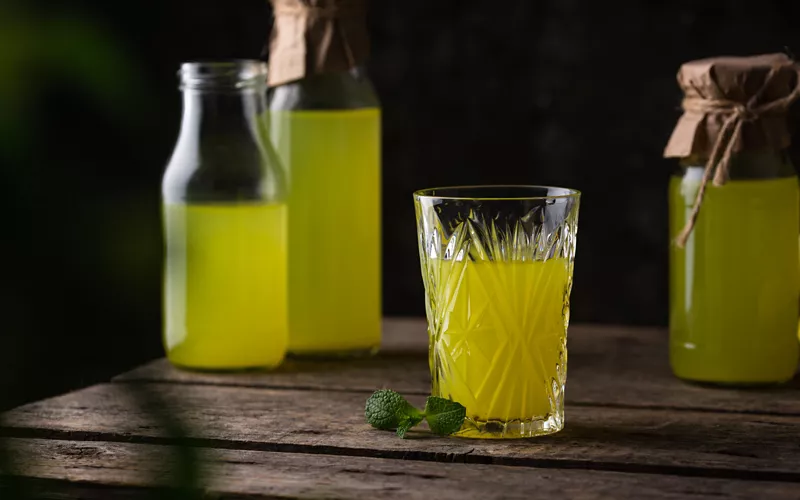
The ancient custom of agricultural communities to reuse lees for the production of alcohol and flavour it with local herbs, led, in the Navelli plateau, to the birth of saffron liqueur.
The precious spice, which arrived in Europe through the Arabs, was introduced to the Piana di Navelli, from Spain, probably in the 13th century by a Dominican monk. Known in the past as a tonic and food substance, it entered the culture and history of local populations. The liqueur, with an intense yellow colour, is obtained by cold infusion of Zafferano dell 'Aquila PDO and aromatic herbs. Excellent as a digestive and as a reinforcement, it can also be used in cooking and confectionery to flavour preparations or diluted to obtain thirst-quenching beverages.
Vino cotto
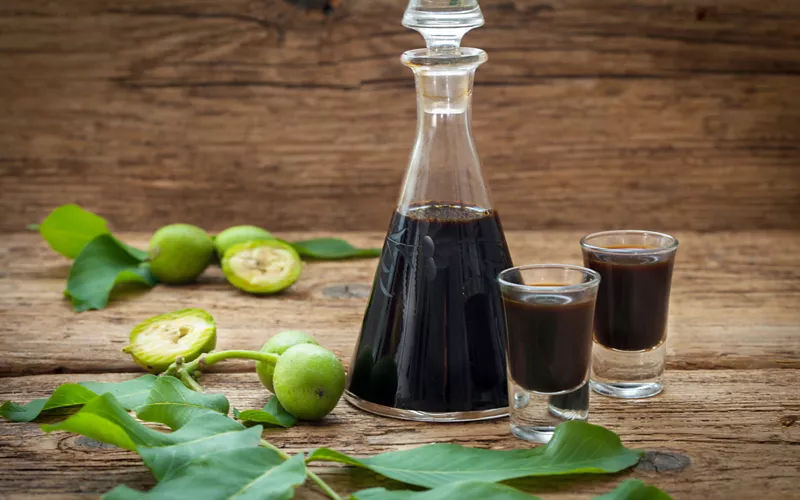
Classified as dry or sweet depending on the presence of residual sugar, baked wine, known locally as "vine cuott" or "vine cott " is an excellent drink to aid digestion. Usually consumed as a dessert, it is characterised by a colour, ranging from amber red to garnet red, an intense aroma and savoury aftertaste. The freshly produced must is boiled in aluminium, stainless steel or copper boilers, fed by hot and slow fire. Ageing in a wooden barrel can last from a minimum of 1 year up to 30-40 years. Vino cotto is, traditionally, an integral part of the wedding toast: the father of the groom, in fact, offers this wine, prepared upon the birth of a boy and preserved until his wedding day. The publication of Filippo Rizzi on the "cooking of must", in 1811, is the oldest evidence of "vino cotto" in Abruzzo. Other testimonies come from the English writer Edward Lear who, in his book 'Illustrated Excursions in Italy' (1843-1844), talks about the territory of Carsoli and mentions aged wines comparable to Marsala. Then, in 1975, the book "Il vino in Abruzzo" by Guido Giuliani describes baked wine as an adjuvant for colds and flu or as a traditional dessert of great value, consumed on memorable occasions.
Ratafia: "Pax rata fiat!"
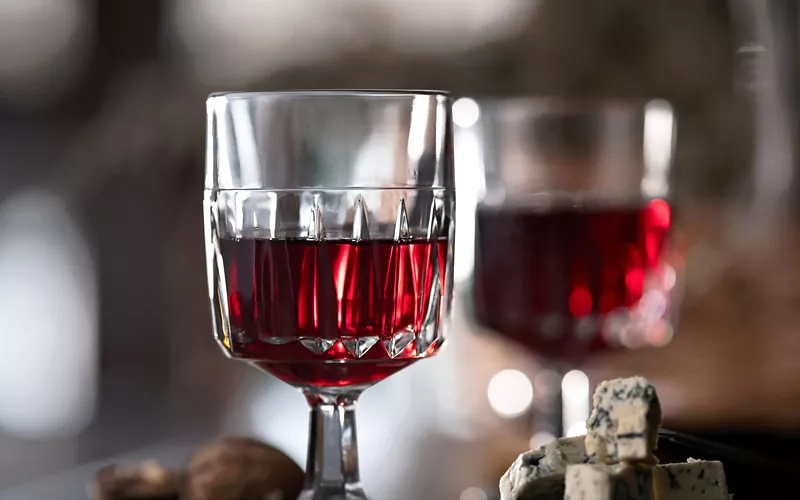
Another liqueur widespread throughout the region is Ratafia. Obtained by combining red wine with sweetened cherries and placed in the sun inside glass jars, it is a liqueur with a sweet and pleasant taste. After a long maceration, the product is then filtered, possibly added with alcohol and bottled. Normally consumed young, to appreciate the greater freshness of the aromas, the liqueur was used to sanction commercial agreements or the signing of notarial and legal deeds at the end of the negotiations.
As Alessio de Berardinis testifies in "Recalls on the way of manufacturing wines and liqueurs" (Teramo, 1868) reporting that "the name... was given to it by the use that the ambassadors of the belligerent powers had in the past when they dealt with peace at a happy table, to drink this liqueur and to pronounce those simple Latin words "Pax rata fiat!".
Ponce: the drink that makes you live a hundred years and a hundred months
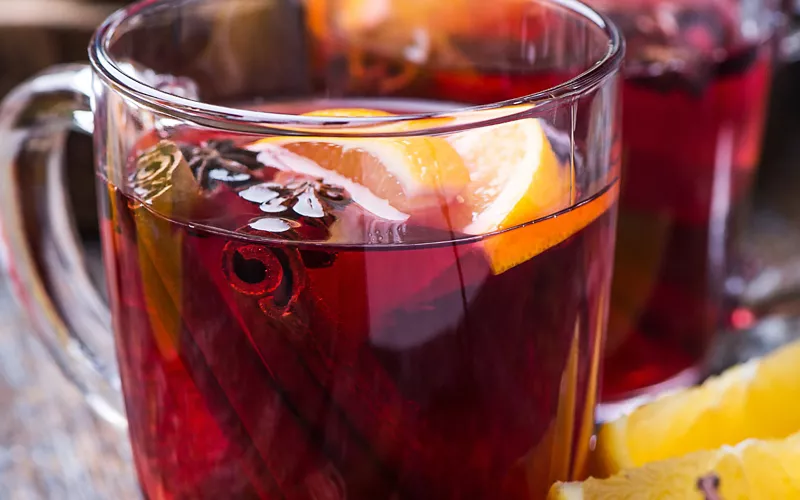
A typical Abruzzo liqueur with a dark and amber colour, Ponce is obtained by cold infusion of citrus peels, with the addition of caramelised sugar, alcohol and quality rum.
Among the different procedures to obtain this famous liqueur we remember the one reported by Nice Cortelli Lucrezi, in "Grandmother's Recipes" in 1974: you have to thinly slice the peel of an orange or lemon or mandarin, and macerate it in about 300 g of alcohol for 24 hours. Of the 400 g of sugar needed, a small part should be caramelised in a copper pan while the other should be dissolved over low heat in about 300 g of water. The syrup obtained must be combined with caramelised sugar and, once cooled, it joins the flavoured alcohol to be then filtered and bottled.
Unlike domestic production, artisanal production involves the addition of rum as a flavouring.
Strong and delicious liqueur, with the addition of ice cubes it becomes a thirst-quenching summer drink, while in winter, served hot, it is an invigorating treat.
For this product too, like other alcoholic beverages from Abruzzo, tradition attributes the origin to the ancient wisdom of monks transferred over time to the population and to expert apothecaries who set up real businesses. In "Grandmother's Recipes", Nice Cortelli Lucrezi tells us that the pharmacist Alleva di Fara San Martino, used to prepare a Ponce that was so appreciated and renowned that he made the poet Cesare De Titta (1862-1933) pronounce the famous phrase "bevanda che fa cambà cent’anni e cente mise", that is, a drink that makes you live a hundred years and a hundred months.
The Ponce, known and renowned throughout the region, became sought after and appreciated also abroad, obtaining honours also in Hamburg, Dijon and Turin.
Gentian liqueur
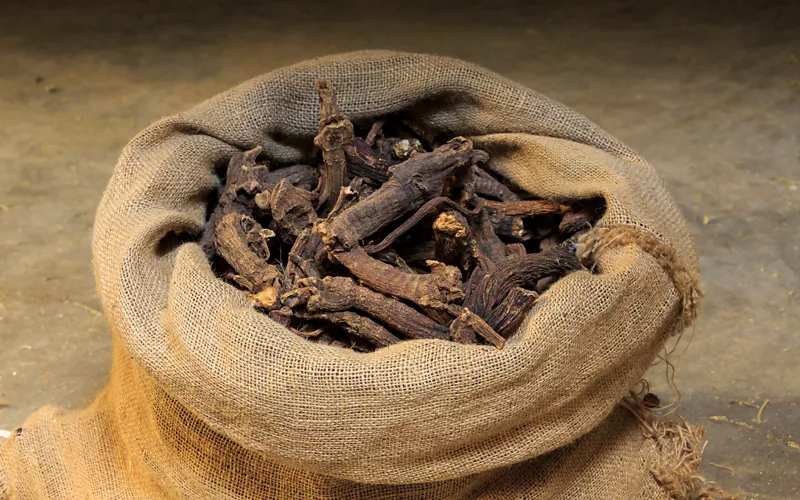
The Gentian plant grows wild in the Abruzzo mountain area and it is here that the oldest production of the liqueur traditionally takes place, although it is currently produced throughout the region. The intense flavour and typical aroma are the unique feature of this liqueur obtained by cold infusion, for a period of at least 40 days, in ethyl alcohol from the roots of Genziana lutea.
Harvested in the autumn period, the roots are dried and used directly for infusion. After being filtered, the liqueur only needs a short decanting period.
Producing small quantities of flavoured wine with gentian roots to be used as an excellent digestive, is an ancient custom in almost all homes in the Abruzzo Apennines. Over time, the wine has been replaced with a hydroalcoholic solution, so as to accentuate the extraction of the natural principles contained in the root and increase the fragrance of the final product.
There are many recipes that, over time, have enriched the Abruzzo herbal and liqueur tradition by creating high-quality, genuine and highly digestive products.

